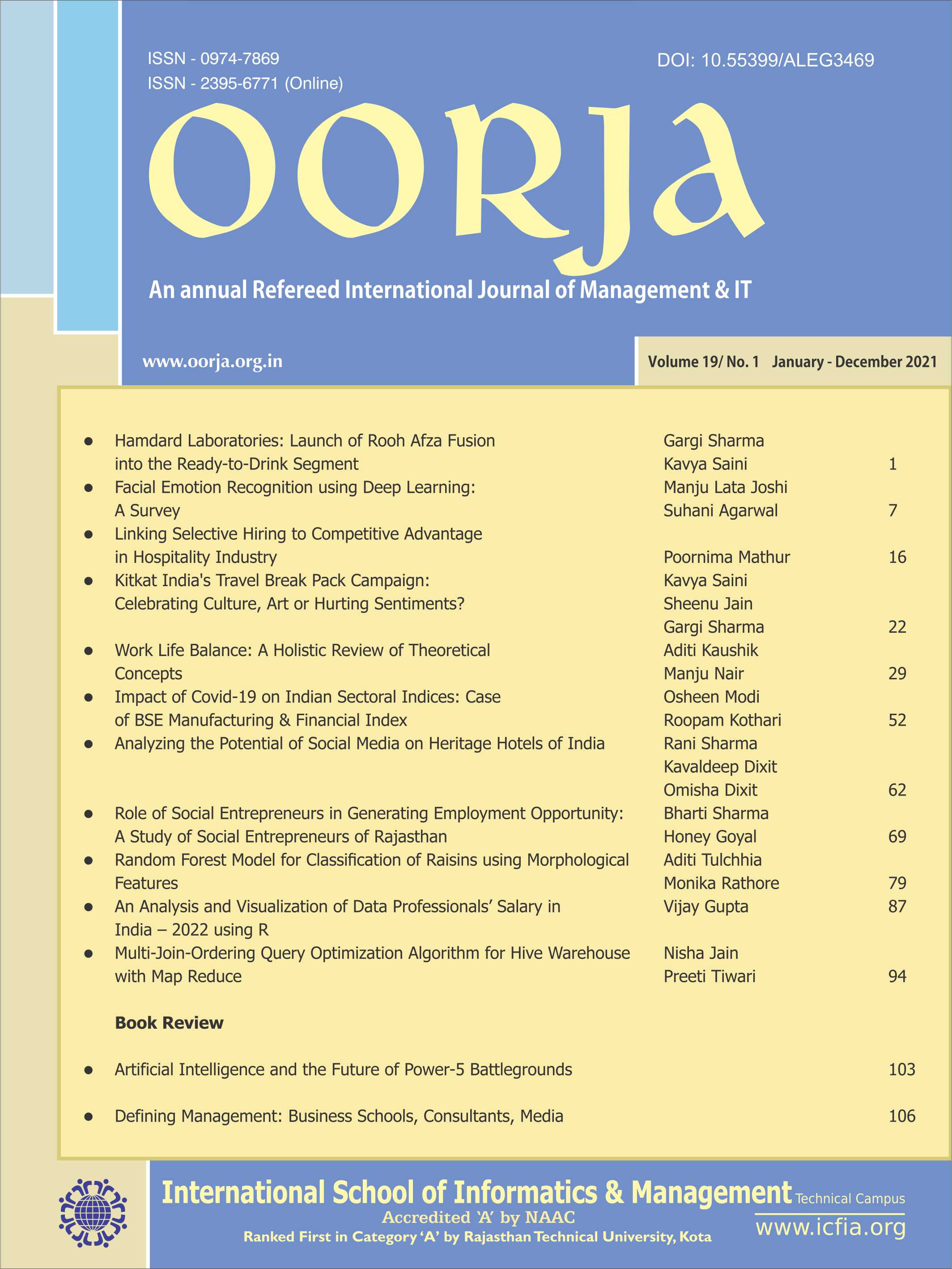OORJA

From the Director

Dr. Ashok Gupta
Director
According to TRAI, March 2021 ended with an active internet user base of 825.30 million from a 795.18 million in December 2020, with the country registering a quarterly growth rate of 3.79 per cent average number of internet users. While the workforce was settling down for a 'Work from home' mode and the 'Vocal for local' business witnessing a great appreciation, the thought 2020 set in was work from home is here to stay and that a contingency plan is must on everyone's cards be it an individual or a business. But there still remains a doubt as to whether this wave of digitalization is an all-encompassing one? Or could it be only for a selected few? And what if this wave is not inclusive enough to uplift everyone? How do we sustain this pace of evolving technology? The Pandemic engulfed everybody into the digital wave with not only professionals across industries but genders and age-group being equally pulled into the tech-wave. Be it consumption of video contents across OTT platforms, payments, banking or the consistent engagement over social media portals, digital inclusion became the new rule of the game. While this digital wave is a self-sustained medium of user generated content which provides accessibility, availability, operational feasibility and caters to a spectrum of diverse users with many of the digital solutions catering to masses, the question still remains, as to whether organizations have been successful in securing a future that is digitally inclusive for their users? Are most of the digital solutions being designed for mass–use? Or do they come with a targeted market and a USP that predominantly attracts the urban millennial? A report by Capgemini on ' The great digital divide' claims that complexity of using internet restrains almost 36% of the people from making the most of technology, while some others struggle with mere technicalities and still others find difficulty in upgrading. With the digital penetration expanding across markets an intervention that looks at people-centric public policies that protect the privacy of its users is critical. With exaggerated stories doing rounds on Whatsapp and everyday TV ads by banks issuing warnings about not sharing OTP or personal data, there may be some who take a complete aversion to digital banking thereby creating a fear of unknown to embrace the digital wave. It becomes essential here to invest in teaching people through informative campaigns as well interactive channel presence to address their apprehensions and queries, helping them through the transition into the digital world. A natural user experience that replicates common humanized behaviour during digital interactions can increase better adoption. Empowering the digitally excluded to access more online options through simplification of technology can drive digital transformation with more users falling in from across different sectors. Using symbols or voice control with voice recognition mechanisms or perhaps facial recognition with customizable access can reduce the dependency on typing. The digital divide that has been created by internet with digital natives on one spectrum and the digital immigrants on the other shall cease to exist only when the tech- first digital initiatives are truly inclusive while maximizing the use of digital

From the Editor

Dr. Manju Nair
Editor-in-chief
Innovative thinking coupled with technology is once again going to be the prospective decider, when it comes to the question of, when and who is going to return to work from offices. The reality solutions that include virtual reality (VI) and augmented reality (AI) are likely to eradicate all barriers between people that are inherent to digital collaborative working in times to come. During anticipating and planning for a work model the main factors considered include the kind of tasks, the level of tacit knowledge transfer required as well the need to embed people in the corporate culture. Say for e.g. Police officers shall still be required to go out and tackle the crime and the factory workers won't be able to perform their jobs from home and where people are required to learn from observing and being physically present, they will have be working from their offices. The thought that we are going to return to a normal or even a "new normal" doesn't look very attractive as the pace of technological innovations experienced even before the pandemic had made it hard to establish a "normal”, which was probably a lasting shift. The fact remaining that the normal is on a permanent shift and is constantly changing, so for once if it weren't the pandemic or any other disaster throughout the year, the reason would definitely have been another, for instance a new technology, emerging competitors or even new ideas. Creating positive change and competency in totality across organizations - and not just the parts which currently are under threat from disruptive events, while adapting lessons learnt from the past is crucial in building forward-looking and resilient businesses. The current issue in its unique flavor and style brings to its readers studies on topics as broad as Facial Emotion Recognition using Deep Learning, Selective Hiring, Impact of Inflation on Middle Class Families in Chandigarh City, Impact Of Covid-19 on Indian Sectoral Indices, Work Life Balance and case studies on 'Hamdard Laboratories' and 'Kitkat India's Travel Break Pack Campaign'. The Book reviews on 'Artificial Intelligence and the Future of Power-5 Battlegrounds' and 'Defining Management: Business Schools, Consultants, Media' are indeed excellent and crunchy tasters of the respective books. 2021 has been quite a trip. We thank all our readers, authors, reviewers and editors for their continued engagement with the Journal during these challenging periods. As I sign off we look forward to more contributions in the form of research papers, review articles, case studies and book reviews for the coming issue. Happy Reading!

